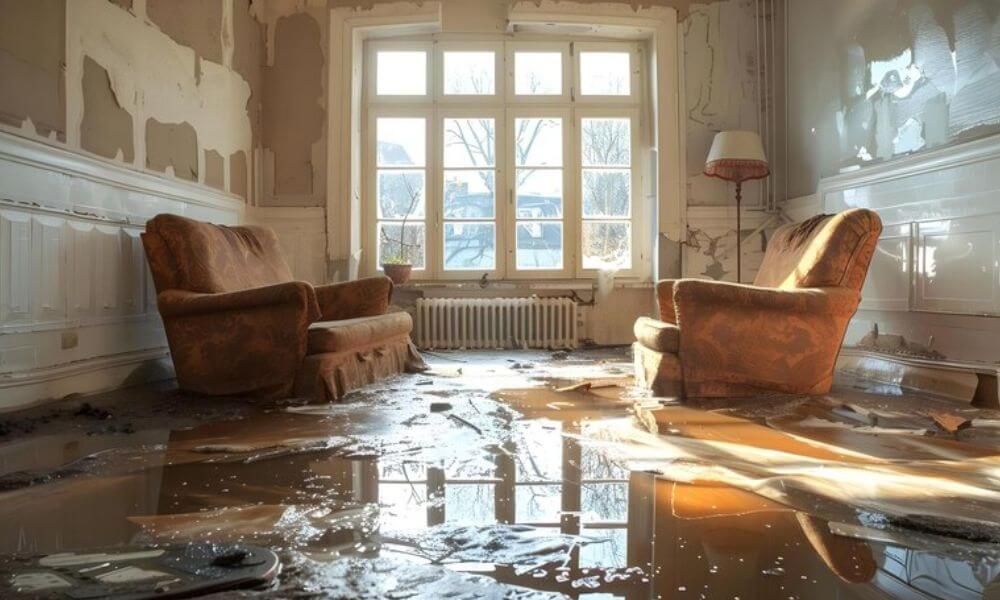Home water damage can lead to severe long-term consequences if not addressed promptly. One of the most common issues caused by water damage is the growth of mold and mildew, which can compromise indoor air quality, cause health problems, and damage property. Water damage restoration plays a crucial role in mitigating these risks by identifying the sources of moisture, removing standing water, and properly drying affected areas. Ezclasswork will explore how effective water damage restoration in Gilbert AZ can prevent the growth of mold and mildew, thus protecting your home from further harm.
Identifying and Addressing Moisture Sources
The first step in any water damage restoration process is identifying and addressing the underlying sources of moisture. Moisture is the key ingredient for mold and mildew growth, and it can stem from various sources, such as leaky roofs, broken pipes, or flooding. In restoration, professionals assess the affected area to locate the moisture source, ensuring that it is stopped before any additional damage occurs. This step is essential for preventing the recurrence of water damage, which could create an environment conducive to mold and mildew growth. Without eliminating the source of moisture, even the best efforts to dry out the area could be futile. Restoring the space involves removing the water and resolving the issue that caused the flooding or leak in the first place. Taking immediate action to address these sources ensures that mold and mildew do not have the opportunity to thrive.
Thorough Water Removal and Drying
Once the moisture source has been addressed, the next critical phase in the water damage restoration process is removing standing water and thoroughly drying affected areas. Left unchecked, water can seep into walls, carpets, and flooring, providing an ideal environment for mold and mildew. Water damage restoration services employ powerful pumps and vacuums to remove as much standing water as possible. After this, high-velocity air movers and dehumidifiers dry out the remaining moisture. This is especially important in areas that are difficult to reach, such as under floors or behind walls, where moisture can linger and facilitate mold growth. Proper drying reduces the chance of mold proliferation and helps prevent further damage to the building materials. The quicker the area is dried, the less time mold has to take hold, and the more likely restoration efforts will successfully maintain a healthy, mold-free environment.
Effective Mold Prevention through Moisture Control
Mold thrives in areas that are damp and poorly ventilated. In the aftermath of water damage, areas that remain wet for an extended period are at a high risk of mold colonization. Professional water damage restoration services use moisture meters to measure the levels of water content in various materials, ensuring that everything is completely dry before restoration is complete. By accurately assessing the moisture levels, restoration professionals can determine whether any areas still pose a risk for mold growth. They can then take appropriate measures to address these remaining wet spots, such as applying mold-resistant treatments or ensuring better ventilation. Proper moisture control is a key aspect of mold prevention, and it’s a step that professionals are trained to handle effectively. Even minor water damage can result in significant mold and mildew problems that may require costly remediation efforts without thorough moisture control.
Cleaning and Sanitizing Affected Areas
In addition to removing water and drying affected spaces, cleaning and sanitizing the area is vital to mold prevention. Water often carries bacteria, viruses, and other harmful pathogens that can thrive in damp environments. Simply drying the area is not enough to prevent future issues. Water damage restoration experts utilize a variety of cleaning and disinfecting techniques to ensure that all surfaces are thoroughly sanitized. This includes antimicrobial treatments, which kill existing mold spores and prevent new mold from forming. Sanitization also helps reduce the risk of other contaminants, such as bacteria or viruses, spreading throughout the home after water damage. Cleaning surfaces, carpets, and walls remove any organic matter that could serve as a food source for mold, further reducing the potential for mold growth. A deep clean safeguards against mold and mildew and ensures the home is restored to a healthier living environment.
Water damage restoration is not just about cleaning up after an incident; it is an essential process for preventing the growth of mold and mildew, which can have lasting effects on both the property and the health of its inhabitants. By identifying and eliminating moisture sources, thoroughly drying affected areas, controlling humidity, cleaning, and ensuring proper ventilation, restoration professionals provide the necessary steps to prevent mold and mildew problems. With these preventive actions, homeowners can protect their property, reduce the likelihood of health risks, and avoid expensive repairs.
